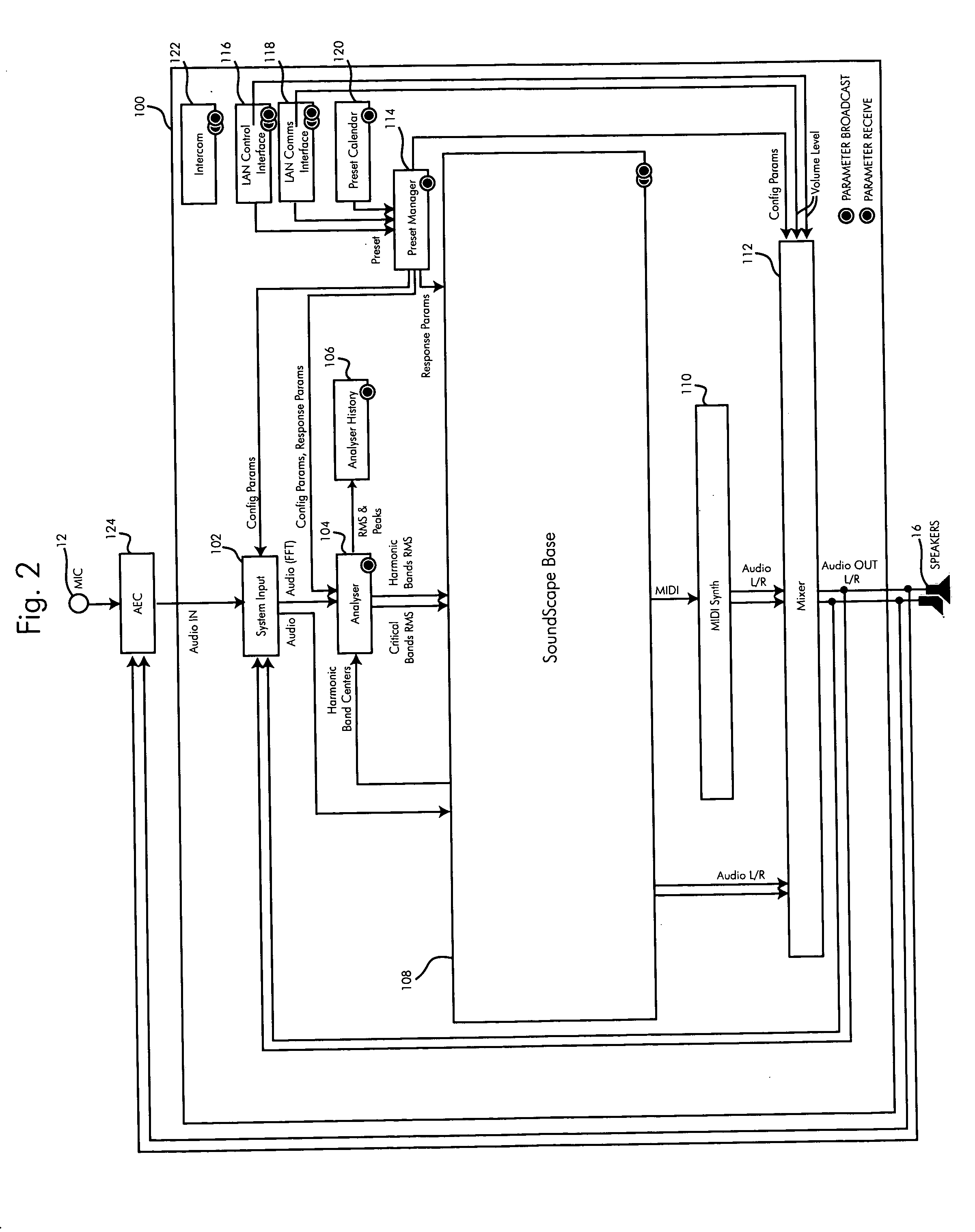Electronic sound screening system and method of accoustically impoving the environment
a technology of acoustic impovement and electronic sound, applied in the field of electronic sound screening system, can solve the problems of weakening identity, affecting the acoustic quality of the environment, and the complexity of the human auditory system, and achieve the effect of a larger physical scal
- Summary
- Abstract
- Description
- Claims
- Application Information
AI Technical Summary
Benefits of technology
Problems solved by technology
Method used
Image
Examples
Embodiment Construction
[0101] The present sound screening system is a highly flexible system using specially designed software architecture containing a number of modules that receive and analyze environmental sound on the one hand and produce sound in real time or near real time on the other. The software architecture and modules provide a platform in which all sound generation subroutines (for easier referencing, all sound producing subroutines—tonal, noise based or otherwise—are referenced as soundsprites) are connected with the rest of the system and to each other. This ensures forward compatibility with soundsprites that might be developed in the future or even soundsprites from independent developers.
[0102] Multiple system inputs are also provided. These inputs include user inputs and input analysis data adjusted through mapping. The mapping uses an intercom system that broadcasts specific changing parameters along a particular channel. The channels are received by the various modules within the so...
PUM
 Login to View More
Login to View More Abstract
Description
Claims
Application Information
 Login to View More
Login to View More - R&D
- Intellectual Property
- Life Sciences
- Materials
- Tech Scout
- Unparalleled Data Quality
- Higher Quality Content
- 60% Fewer Hallucinations
Browse by: Latest US Patents, China's latest patents, Technical Efficacy Thesaurus, Application Domain, Technology Topic, Popular Technical Reports.
© 2025 PatSnap. All rights reserved.Legal|Privacy policy|Modern Slavery Act Transparency Statement|Sitemap|About US| Contact US: help@patsnap.com



